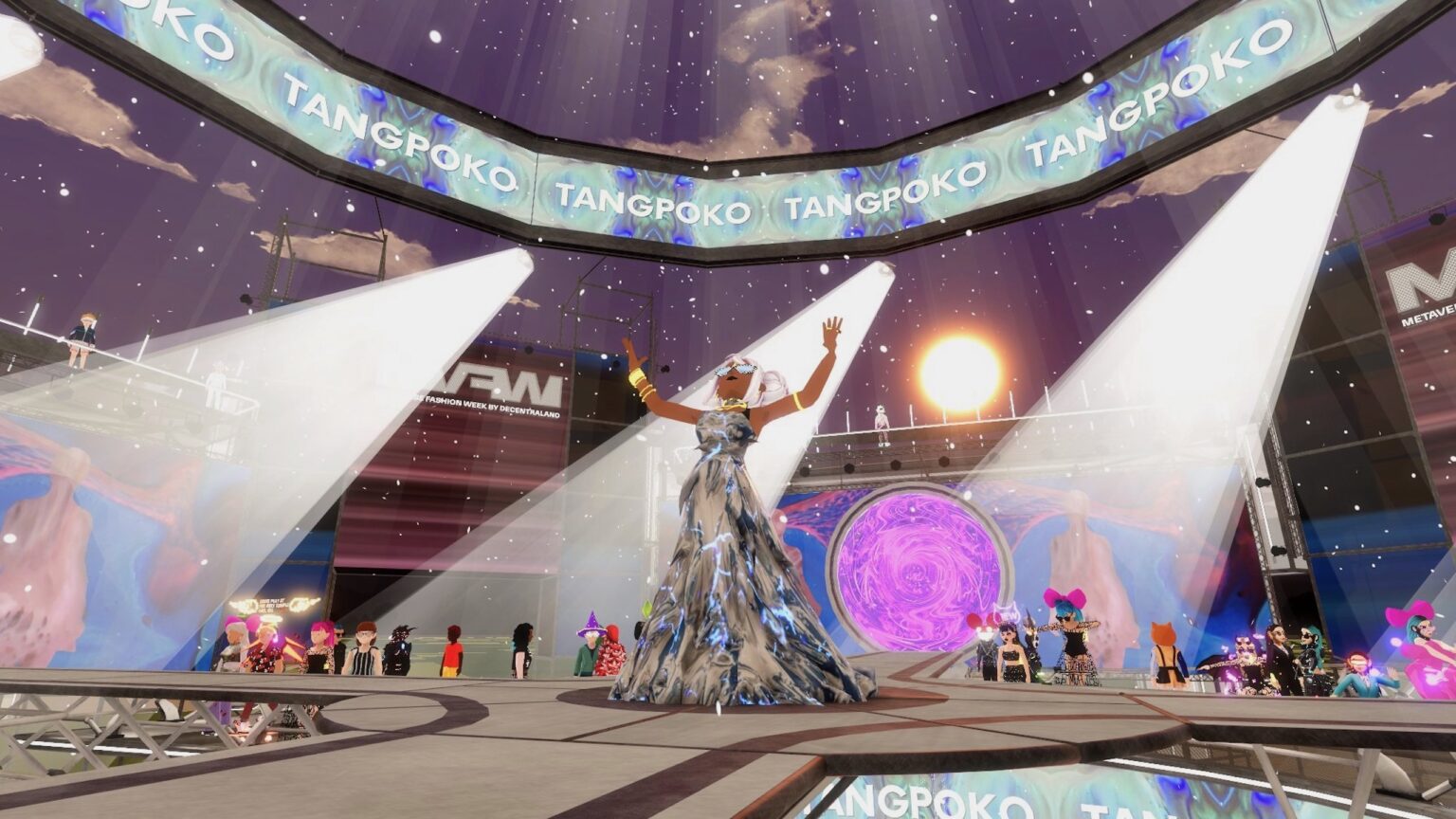Fashion has long been earmarked as a potential use-case for the metaverse – if you’re gonna navigate virtual reality as an avatar, why wouldn’t you want to trick your representative out with the best digital swag?
So goes the thinking of the brands that participated in the second edition of Metaverse Fashion Week (MVFW) last week. The 2023 event featured around 60 designers and fashion houses including Bradley Sharpe, Dolce & Gabbana, Tommy Hilfiger, Adidas, Philipp Plein, and DKNY, with virtual catwalks, panels, and parties providing a showcase for new collections.
So, was it a success? And does fashion remain a viable industry for further metaverse development?
Fashion brands employing ‘coherent strategies’
Based on reports from those who attended this year’s four-day Metaverse Fashion Week, there are both positives and negatives to be drawn from the occasion.
On the positive side, the 2023 event was not limited to the Decentraland platform like last year, as it bridged to other metaverse venues like Spatial and Over the Reality, the latter boasting an AR function that overlays virtual assets on top of the real world. A number of novel experiences also took place, like Tommy Hilfiger and DRESSX’ AI fashion challenge, wherein budding AI designers got the chance to craft designs through written prompts.
We took part in the first ever hybrid catwalk show during #MetaverseFashionWeek in the center of Milan 🇮🇹 THANK YOU @OVRtheReality 💜💜💜 pic.twitter.com/MYrFl7jqyK
— Ecoolska (@ecoolska) April 3, 2023
Much-improved features were also introduced this year, with Decentraland attendees now able to click on an avatar whose outfit they admired to reveal details and indeed a link to purchase. Hugo Boss, meanwhile, showcased its wares in an AI-inspired, gamified showroom that served as a “digital extension” of its Miami Fashion Show.
“Last year the brands were more showing up, but now they know a lot more what they want,” Mike Charalambous, CEO of Threedium, told Forbes.
“There’s now a coherent strategy behind it employing real narrative and brand values.”
Perhaps one of the coolest things about MVFW23 was Adidas’ tie-in with Decentraland, wherein holders of virtual gear NFTs could sport their items within the virtual reality platform. The sportswear giant actually gave away 5,000 runner jacket wearables to attendees.
Another major difference from last year is market sentiment. When the 2022 Fashion Week got underway on March 24, the price of ETH was around $3,100 – some way off November’s ATH of $4,810 but considerably higher than it is today: on Day 1 of the 2023 event (March 28), ETH traded at $1,715.
Metaverse maximalists have faced a bit of a reality check since last year, with searches trending down, multiple projects pulled, billions lost, and thousands of jobs cut. Which leads us nicely onto the ‘cons’ of this year’s Fashion Week.
Metaverse still far from perfect
While 70 brands participated last year, this year’s attracted 63. Moreover, there were fewer than 50,000 attendees compared to a reported 108,000 in 2022.
One reviewer, meanwhile, criticized the fact that avatar choices were limited to pre-customized options, “forcing me to opt for something I didn’t particularly like but had to roll with” and bemoaned the “bugs, glitches and page crashes.” Piloting his avatar “felt like navigating a heavy trolley around a shopping mall.”
It was hard to ignore, too, the comparative lack of hype or discussion on social media. One post from Tommy Hilfiger’s official account, which has 1.5m followers, received just 16 RTs and 177 likes from over 25,000 views.
Day 3 at #MVFW23 is a special one for us as we welcome you to where it all began – People’s Place. Snap away in our photo booth, solve a puzzle to win artwork, and don't forget to share your AI challenge designs with us. Step in at https://t.co/0FtfWkqy6U. #TommyHilfiger pic.twitter.com/6nHu3o2njX
— Tommy Hilfiger (@TommyHilfiger) March 30, 2023
The aforementioned reviewer also noted the low number of attendees, remarking that he “managed to get the best view in the front row along with a handful of other avatars for most shows.”
Perhaps digital wearables have, like so many other things, been lost in the shuffle as AI seizes the industry’s attention thanks to the success of ChatGPT and other tools. Maybe a third instalment of Metaverse Fashion Week will dominate the headlines due to technological advancements and a more favorable market.
Another possibility is that fashion houses and clothing retailers entering the metaverse reverse course, motivated by the prevailing mood music and a sense that the metaverse hype-cycle has run aground. Only time will tell.









 and then
and then